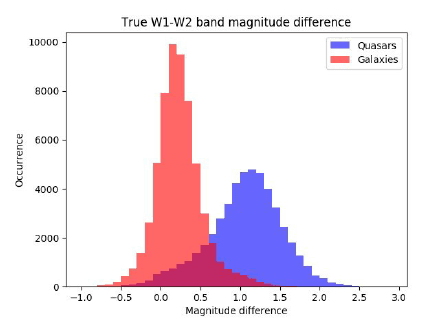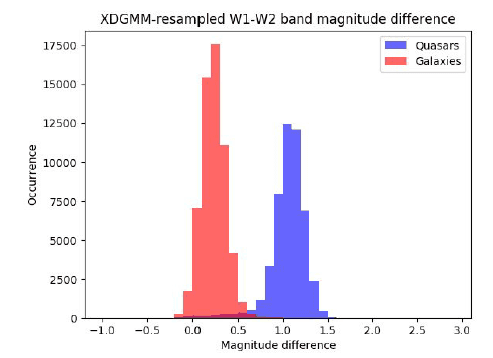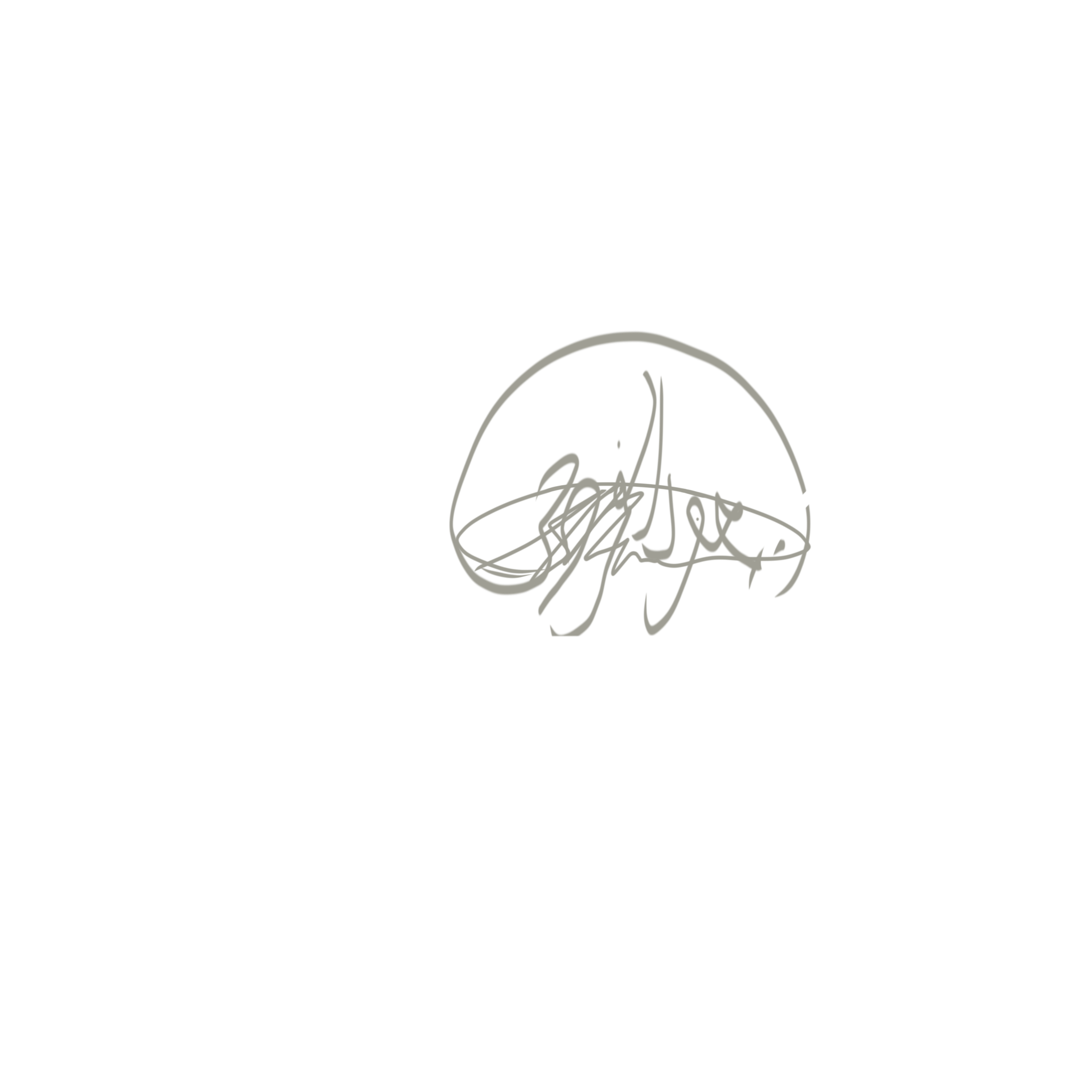Quasars are supermassive black holes at the centres of galaxies. Matter surrounding the quasar accretes onto the black hole forming a a disc which can reach very high temperatures. Sometimes this process can produce jets that emit enourmous amounts of energy; often outshining their entire host galaxies.
Changing look quasars (CLQs) are black holes which seem to go from on (high accretion rate) to off (low accretion rate) or vice versa on timescales as short as 10 years. The mechanism for this change of state is unknown. During the last term of my undergrad, I worked with Maclean Rouble under the supervision of Dr. John Ruan and Prof. Daryl Haggard to develop a method to find more of these CLQ objects.
We decided to look at archival SDSS catalogues of quasars and galaxies and cross reference them with objects found in WISE satelite data, paying attention to their infrared ‘colour’ (difference in magnitude between two WISE bands).
On the left of the figure above, we see that the galaxy and quasar groups have a large crossover. Then, we apply extreme deconvolution gaussian mixture modelling (XDGMM) to generate a sample data set which simulates a much higher signal to noise ratio (see figure). We then began to outline an algorithm to identify likely CLQ candidate objects.


